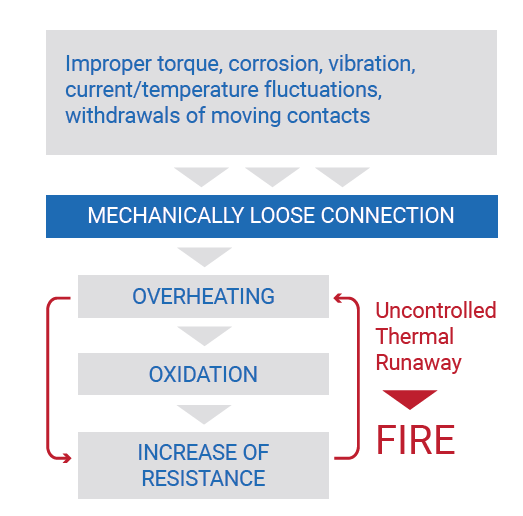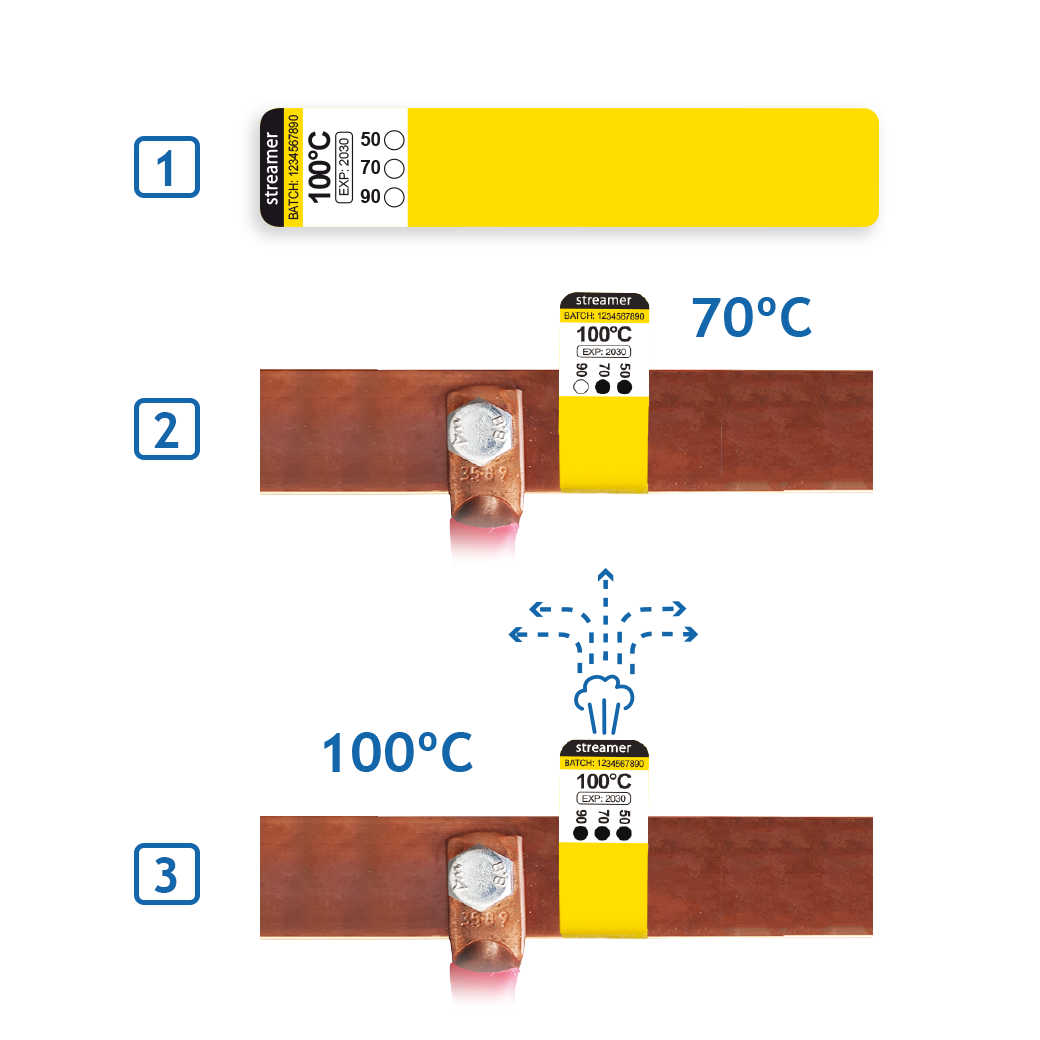FIPRES - Fire/overheating prevention
Key benefits
- 24/7 control of concerning points in LV and MV electrical panel of any configuration
- Detects hot spots long before a dangerous situation arises, hence avoiding material damage, stop of production process and threats to life
- Increases equipment safety and reliability of operation
- Can be integrated to SCADA/BMS and local alarm systems
- Quick and easy installation even for existing systems
Problem
Every year fire causes an enormous amount of damage to all kinds of facilities, social and private possessions. It can lead to life threatening incidents and huge losses because of material damage of assets, power supply interruption, production loss and business opportunity cost. Global statistics show that around 30% of the fires are caused by electrical faults:
25% – of building fires are due to electrical malfunctions according to European Fire Academy (EFA)
32% – of fires in Germany are related with electricity according to German Insurance Association
3,2B – USD annual cost of damage in the U.S. and Europe due to electrical fires according to the National Fire Protection Association (NFPA) and the European Fire Safety Alliance (EFSA)
In practice, the most common cause of fire and damage to equipment in electrical panels are loose connections, especially those made on site. The connection may become loosened due to improper tightening torque during assembly, constant vibration, corrosion or mechanical wear of moving contacts, such as withdrawable contacts of a circuit breaker. Another reason which can lead to a worsening of the contact condition is temperature cycling through the day. Heating at high current and cooling at low current causes expansion and contraction of contact and may lead to contact loss. And even if an insufficiently tightened connection can still provide an acceptable level of mechanical reliability of the connection, it worsens electrical and thermal reliability:
- As soon as the connection is loosened, its own resistance increases. This happens due to loosening the fit of contact surfaces (Bolt / Busbar, Cable lug / Busbar, etc.) This resistance causes the contact to heat up
- Heating due to increased resistance contributes to the oxidation process (which happens faster at higher temperatures)
- Oxidation covers the contact with an oxide film, and its resistance is much higher than for the base metal
- The resulting thermal runaway leads to a complete failure of connection. As a result, such contact burns out or leads to an electric fire in the compartment

FIPRES. How it works
FIPRES works on principle of early detection. Indeed, usually fire starts with melting of cable insulation, which is the weakest point in terms of withstanding temperature. Depending on the material and thickness, generally there are 2 critical temperatures for cable insulation: 200 °C, when insulation to deteriorate and 280°C, when insulation material starts to melt and smoke. FIPRES works way below these temperatures, providing detection of overheating in a range 80...130 °C, which are abnormal temperatures for electrical equipment, but still months before any dangerous situation.
Typical scenario of fire inside electrical cabinets is shown below:

The technology involves the placing of self-adhesive temperature sensitive labels (rFPT) on connection points (busbar contacts, cable lugs, contacts of circuit breaker, fuses, current transformer etc.) inside LV or MV electrical panel of any configuration.
Remote fire prevention thermolabel rFPT
 |
1. rFPT must be wrapped around cables/busbars close to the contact points. A gas sensor (FPA) should be installed into the same volume 3. In emergency situations when the temperature rises above 80°/100°/130 °C the sticker releases signal gas which is detected by the gas sensor FPA |
When the contact reaches the activation temperature of the rFPT, the label emits non-toxic and non-flammable signal gas which is detected by special gas sensor (FPA) located in the same compartment as the rFPTs. Immediately after that FPA transmits an ALARM signal to SCADA or BMS system by Modbus or to any other external system via dry contact output.
Fire prevention alarm FPA
 |
4. FPA (after detection of the signal gas) goes into ALARM mode and transmits alarm signal to SCADA or BMS system through Modbus RTU, or to local alarm systems using dry contact output. FPA can be installed both in LV and MV electrical panel. |
Fire prevention concentrator FPC
 |
5. FPС monitors the status of up to 32 FPA, displays and records Alarm signals. When FPA is triggered, the FPС transmits information to the central fire alarm system, SCADA or BMS. FPA has a speaker for audible notification You can use a similar device which supports RS 485 Modbus instead of FPC (or even use light version of FIPRES: only rFPT + FPA. In this case FPA transmits signal directly to SCADA/BMS) |

Technical comparison with thermal imaging control
Regularly checking contact connections is complex due to their large number, the constant operation under-voltage, and often the lack of access for the inspection. The most popular method - scheduled infrared thermography inspections has several significant disadvantages.

|

|
Scope of application
FIPRES can be used in:- Low/medium voltage electrical panels
- Switchgear cells
- Any electrical equipment, including equipment in explosion-proof housings
